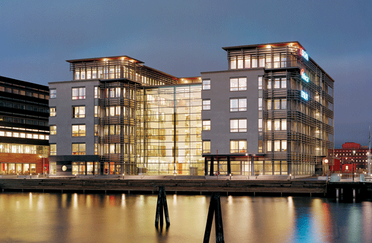Workplace lighting standards only tell half the story. Here’s the other half
 | Standards on office lighting provide invaluable guidance on what to do and what not to do. But creating truly great workplace lighting is about much more than just adhering to the recommended numbers. Here's what you need to know to go beyond the standards. |
Employers the world over are waking up to the huge influence that office lighting has on the health and productivity of their people. But many people still work under light they find uncomfortable. Key tools for fixing this are the various established standards and guidelines on office lighting. But simply adhering to the standards is not enough. It’s perfectly possible to follow the recommendations and still come up with a poor lighting design. We need to look at the bigger picture. Historically, the focus of lighting for offices has been on visual performance, comfort and aesthetics. The most important factors are light levels, distribution, colour rendering and glare, all of which are covered in the European standard for workplace lighting, EN12464, and in numerous office lighting guidelines. But these factors only tell part of the story of how lighting affects people at work.
Going beyond Standards Humans evolved by the light of the sun, and our bodies use the sun’s light to see, but also to set our body clocks and control our sleep-wake cycles. This means the right light at the right time keeps our minds alert and our bodies running smoothly. Too little light – or too much at the wrong time – disrupts our natural rhythms. |  |
Unfortunately, most of the guidelines used for lighting offices were developed before such effects were understood. For example, when computers became commonplace in offices in the 1980s, it was recommended that offices be lit with high levels of horizontal illuminance and lower levels of vertical illuminance, to avoid glare on screens. Luminaires that met these requirements became the norm in offices. The unintended consequence was to limit the amount of light getting to people’s eyes, meaning that workers weren’t getting enough light to keep them alert. In a 2005 study using mock-up offices, lower levels of vertical illuminance were found to be linked to greater fatigue and worse sleep. The researchers came to the conclusion that the lighting in the majority of offices would not provide enough vertical illuminance, even if it met the standards.
Similarly, a study by Thorn’s sister company Zumtobel and the Fraunhofer Institute for Industrial Engineering found that a majority of people preferred light levels of 800 lux or higher in an office setting – even though EN12464 only specifies 500 lux for desk-based tasks and 300 lux for filing and administration. EN12464 also recommends maximum glare levels for different tasks, using the unified glare rating (UGR) metric. But UGR doesn’t capture everything. Recent research shows that a direct view of multiple small, intense light sources, such as the bright spots of LEDs in a ceiling light, can appear more glary than a single source – something that UGR does not predict.
Standards and guidelines provide a valuable baseline and help us avoid common mistakes, but coming up with a truly healthy lighting design requires a more holistic approach. What if, instead of judging the effectiveness of lighting by how much light the luminaires emit and how much electricity they use, we judged it by its value in creating a place to work that keeps people healthy and delivering their best? The knowledge, experience and judgement of a good contractor can make the difference between good and bad office lighting for the client.
Thorn’s workplace lighting products put people at the centre of lighting design. Good design and an appreciation of how light affects people allows us to create lighting that supports comfort and wellbeing, while also being affordable, and easy to install and maintain. We do this by following the simple principles of lighting for the task, space and face. If the task can be clearly seen, the space is comfortable to be in and faces are lit clearly and evenly, then we will have created a well-lit workplace.Lighting standards are a huge help, but use them with care. Your own advice and judgement on what works can add considerable value for your customers.
